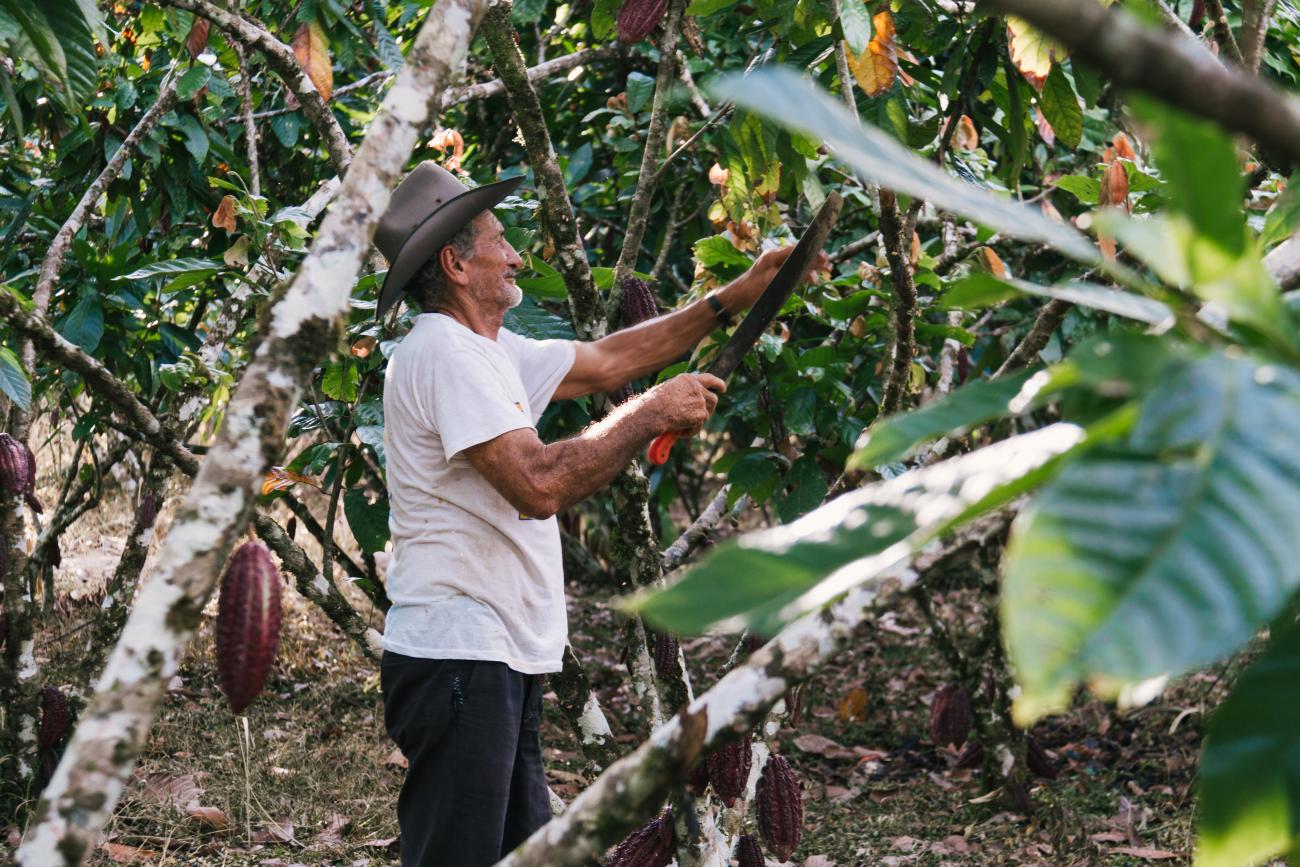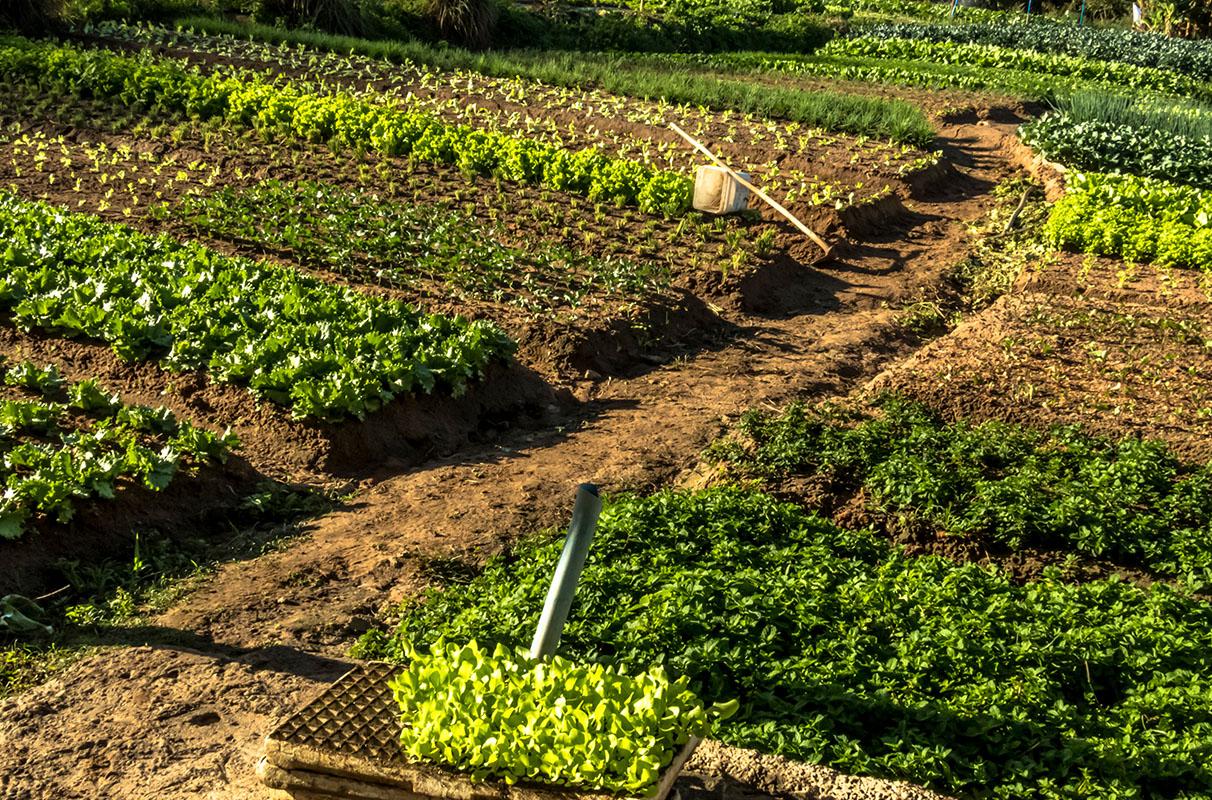Diversification and variety are key in order to support agriculture and protect the environment. Researchers say we should be doing more - things like mixing livestock and crops, integrating flower strips and trees, water and soil conservation. A new global study has examined the effects of diversified agriculture. The conclusion is abundantly clear – positive effects increase with every measure, while negative effects are hard to find.
Dr Mark Hirons, Senior Researcher at the Environmental Change Institute at the University of Oxford is one of 58 researchers on five continents to take part in the major agricultural study which gathered data from 24 research projects. Their research article, published in Science delivers a clear and well-founded message to agriculture: "Drop monoculture and industrial thinking and diversify the way you farm – it pays off."
Dr Hirons, whose work involved studying cocoa production in Ghana and coffee production in Ethiopia, said:
Despite the variation in this incredibly rich analysis, the headline findings are very clear. Essentially, more diverse farms deliver better outcomes socially and environmentally.”

Lead author Laura Vang Rasmussen, from the Department of Geosciences and Natural Resource Management, added: "Our results from this comprehensive study are surprisingly clear. While we see very few negative effects from agricultural diversification, there are many significant benefits. This is particularly the case when two, three or more measures are combined. The more, the better, especially when it comes to biodiversity and food security."
The researchers see the greatest positive effects on food security, followed closely by biodiversity. Furthermore, social outcomes in the form of well-being also improved significantly.
Among the many strategies adopted, livestock diversification and soil conservation had the most positive outcomes.
Yields not hampered– with clearly improved food security
According to the researchers, previous studies investigated either the socioeconomic or environmental effects of agricultural diversification, often looking at the effect single diversification strategies. This study investigates effects across the board, with surprisingly positive results.
They say agricultural diversification has been accused of perhaps being good for biodiversity, but having a few negative aspects too – especially with regards to not being able to achieve sufficiently high yields. But what we actually see, is that there is no reduction in yield from diversified agriculture – not even when we include data from large-scale European agriculture.
In fact, the figures demonstrate that in the case of small farms and farms with lots of cultivated land in the surroundings, more diversified agriculture can significantly promote food security. This, according to the researchers, could be due to a number of factors.
Rasmussen explained: “One example is fruit trees planted in maize fields in Malawi, which can help farming families improve their food security through improved diet and nutrition. Partly because they eat the fruits themselves, and also because the trees generate extra income when their fruits are sold at market – income that provides small-scale farmers with purchasing power for other foods."
Massive amount of data revealed win-win outcomes
All 58 of the study’s authors participated actively in its design to attempt a robust and credible interweaving of the many data sets spread across the world – from maize production in Malawi, to cocoa trees in Ghana, to silvopastoral cattle farming in Colombia and winter wheat in Germany.
Rasmussen added: "The study unites many different situations from the many data sets that we used. In Malawi, we have data on food security expressed, for example, in the number of hungry months for small-scale farmers where they have been short of food. Such metrics are not used for, for example, large European farms, where we have yield data instead, such as winter-wheat yields in Germany.
"But the point is that when we look across all datasets, our results show that applying more diversification strategies improved both biodiversity and food security, and didn’t have a negative effect on yields."
The researchers also investigated which diversification strategies result in 'pairs' of favorable “win-win” outcomes. Their data showed that strategies beneficial for biodiversity also improved food security.
They also witnessed win-wins for biodiversity and people's well-being.
As Dr Hirons notes:
This does not mean that particular strategies will always and everywhere deliver win-wins and there won’t ever be any losers, and it is important that further work unpacks the social equity issues at stake in all agricultural policies and strategies, it is really good to see some high-level trends that can guide discussions on agricultural policy in various contexts.”

Effects with and without natural areas in surroundings
To investigate whether the surrounding landscape influences the effects of diversification strategies, the study also took three different types of landscapes into account: heavily cultivated areas with very little nature, an in-between “simple” category with mixed landscapes, and areas where the landscape around farms is characterised by nature that is relatively pristine.
Until now, the thesis has been that diversified agriculture would only have a very good effect on biodiversity for in-between or “simple” type landscapes, which is also where the researchers recorded the greatest effects. But in fact, the study shows that diversification strategies make good sense in many different contexts. Even in landscapes with more nature, there are positive effects to be gained with regards to biodiversity.
The researchers say it’s a simple message to be able to pass on to different types of farms – whether it is small farms in South America or Africa or advanced European agriculture, there are lots of positive effects to be gained by introducing these various strategies – and very little to fear. It is very positive that so many different things can be addressed, and that, in general, positive biodiversity outcomes seem to go hand in hand with well-being and food security.
This is backed by the joint Principal Investigators of the study. Professor Zia Mehrabi from the University of Colorado Boulder said:
This is an important achievement in bringing together some of the world’s foremost agricultural researchers to synthesise the data needed to back policy on driving the transformations that are needed in farming landscapes.”
Professor Claire Kremen, of the University of British Columbia, added: “The study shines a light on real-world farming conditions in many different regions and contexts worldwide. With the clear positive outcomes of these diversification strategies it suggests that governments and businesses should invest more in incentivising farmers to adopt such strategies, which will in fact help them while also promoting agricultural sustainability and planetary health.”
Read the paper in full: Joint environmental and social benefits from diversified agriculture

